Hull structure analysis and strength evaluation tool in waves
(DLSA-Basic)
DLSA-BASIC
The DLSA (Direct Load and Structure Analysis)-Basic system is an integrated system that calculates hull motion and wave loads in waves, analyzes the structural response of the hull using these loads, and evaluates strength from the results.
<As a marine accident analysis tool>
This tool is valuable in marine accidents involving hull strength, such as damage or breakage. This tool can estimate the hull's wave loads and structural response using the sea conditions at the time of the accident as input. It can also estimate the sea conditions at the time of the accident from the damaged member.
①Wave Load Analysis
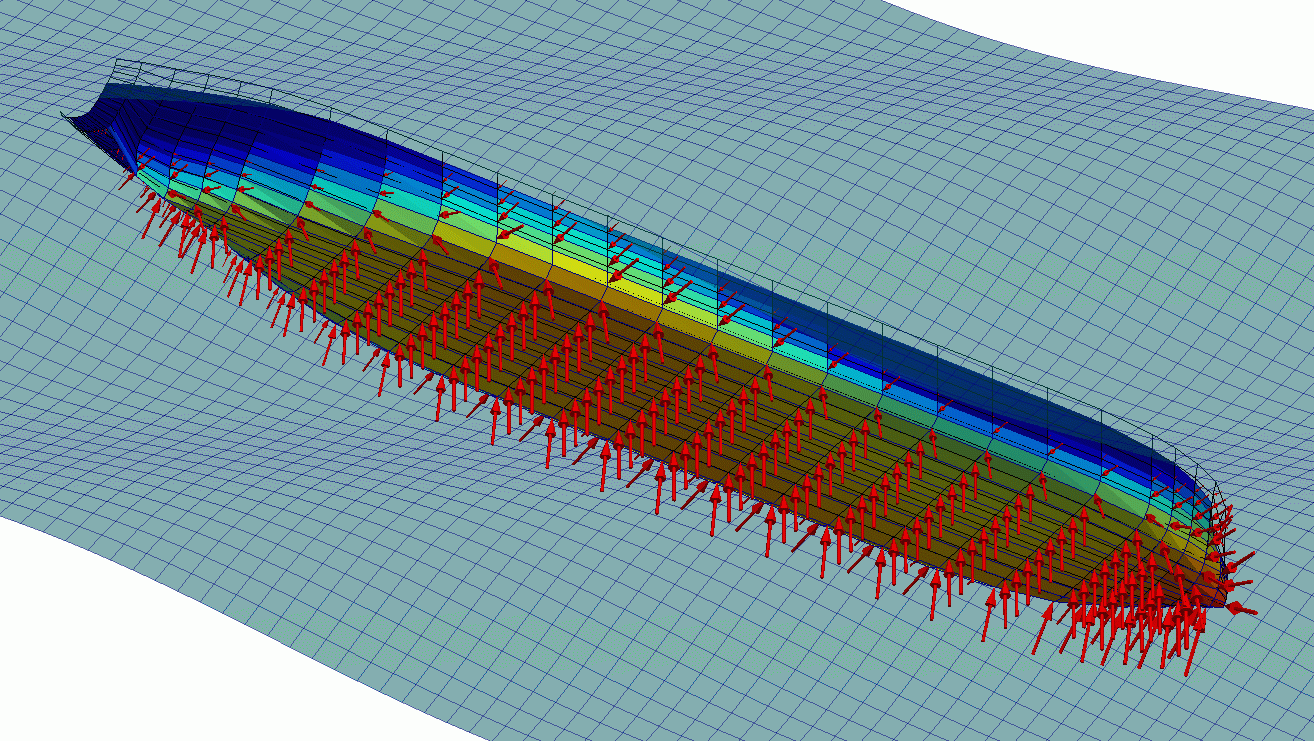
- Ship's motion
- Wave load (inertia force and external pressure)

②Structural Response Analysis
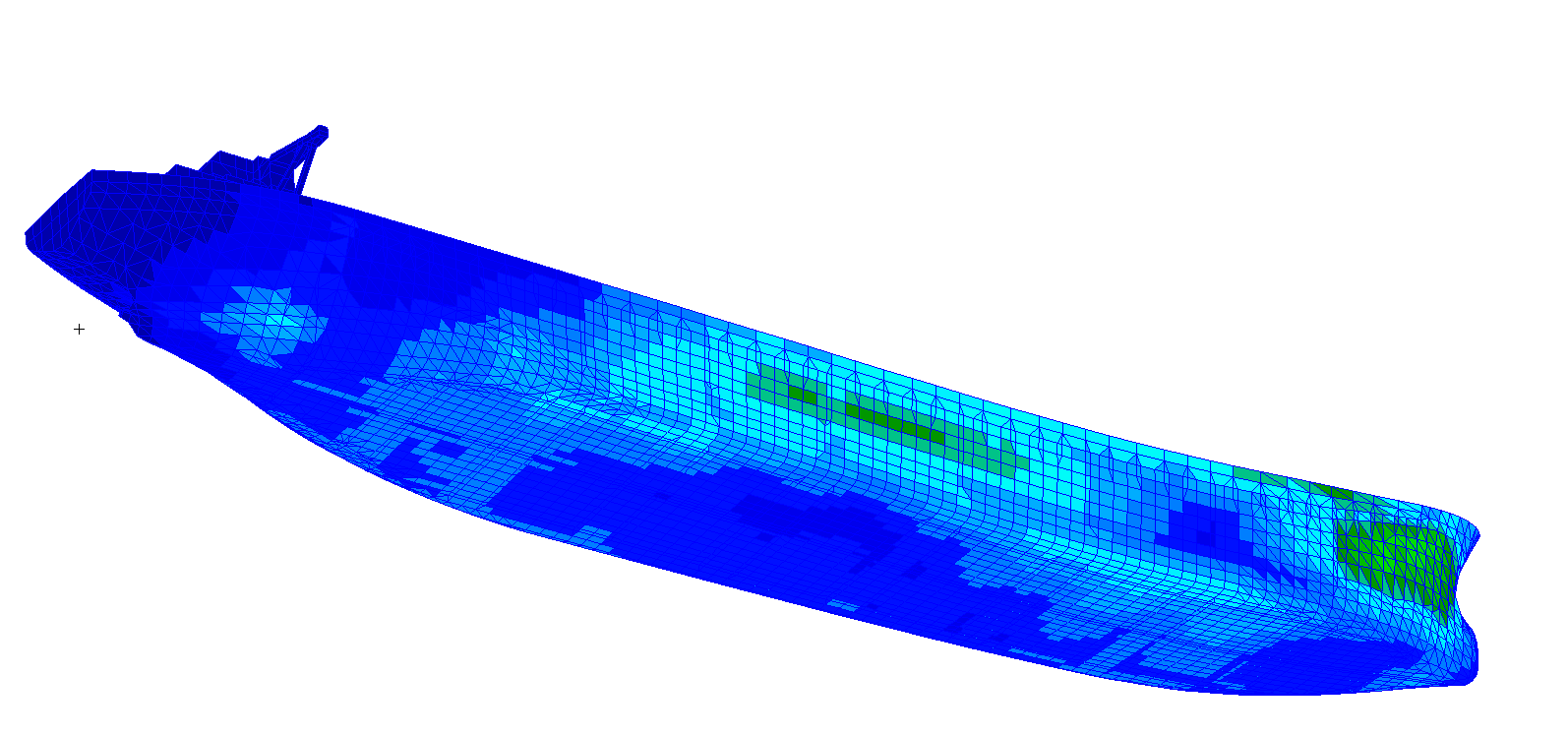
- Structural deformations
- Stress

③Strength Evaluation
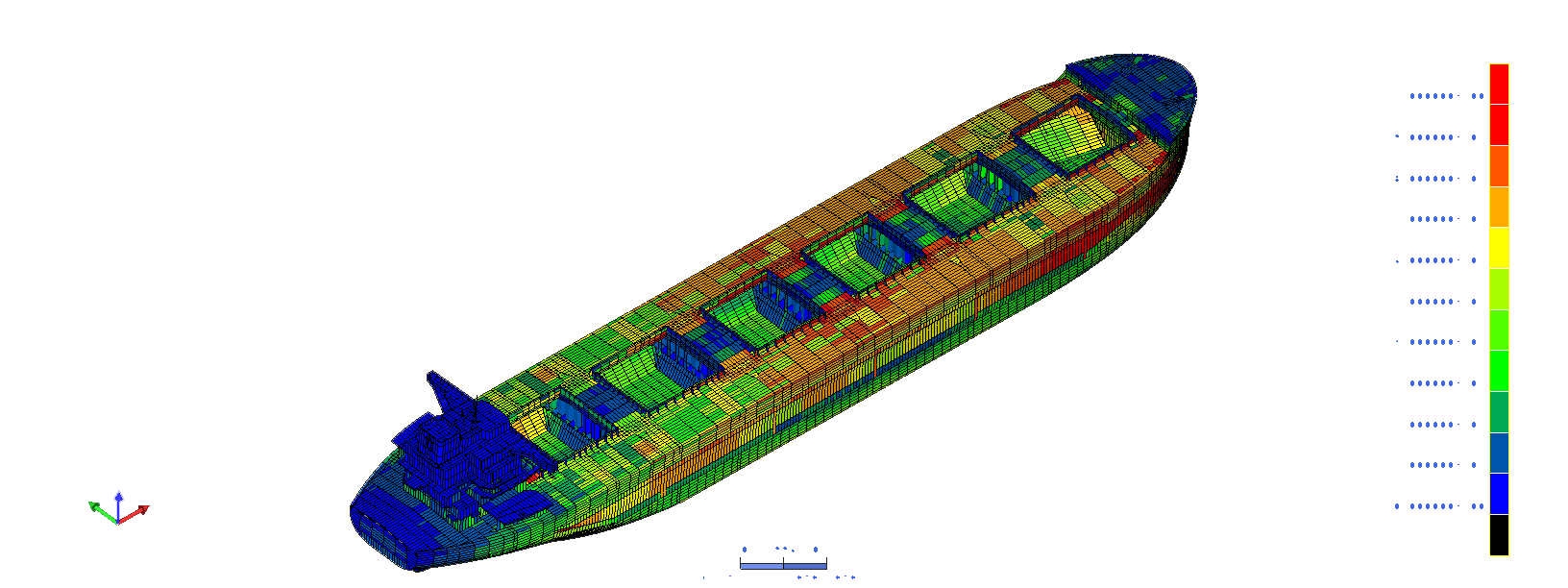
- Statistical prediction of stress
- Judgment of strength evaluation
The flow of DLSA-Basic analysis
DLSA-Basic Features
DLSA-Basic is divided into three stages: ⑴wave load analysis, ⑵structural response analysis, and ⑶strength evaluation. DLSA-Basic is mounted on Technostar's structural analysis pre-post Jupiter, allowing three levels of analysis to be performed seamlessly on the GUI.
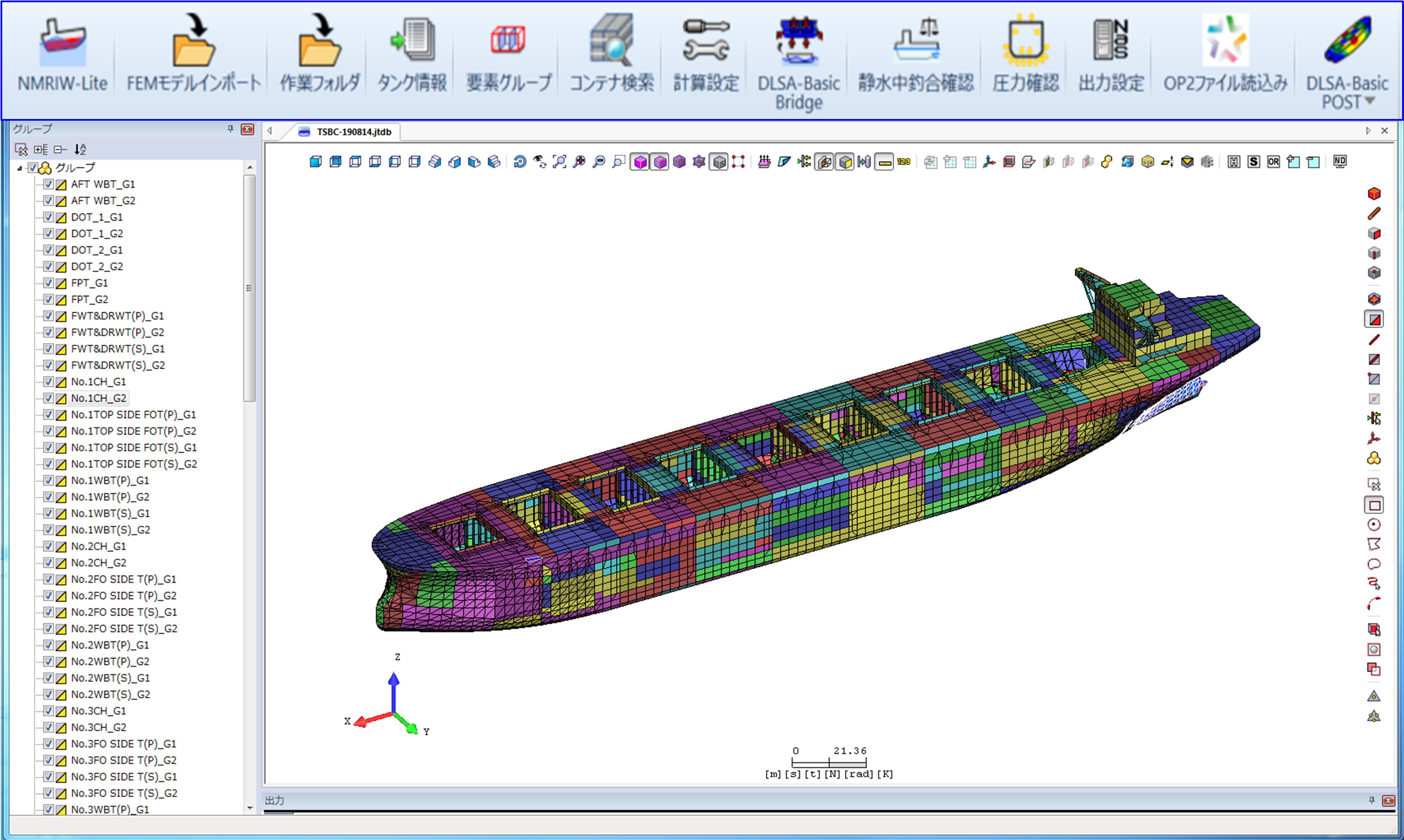
GUI Screen of DLSA-Basic
①Wave Load Analysis: SPREME: NMRI Cloud | SPREME-web (nmri.go.jp) )
- Automatic generation of mathematical hull forms: Although hull form information is required for wave load analysis, mathematical hull forms can be automatically generated from only the main hull features (length, width, square factor, etc.).
- Estimation of wave loads:Calculate hull motion and wave loads (inertia force, external pressure distribution, and hull girder cross-sectional force) in arbitrary waves (regular/irregular waves) using the wave load analysis tool SPREME (NMRI Cloud | SPREME-web (nmri.go.jp)) .
- Statistical prediction of wave load: The wave load analysis comes with a statistical prediction function that can be used to estimate the long-term probability distribution of ship motion and wave load.
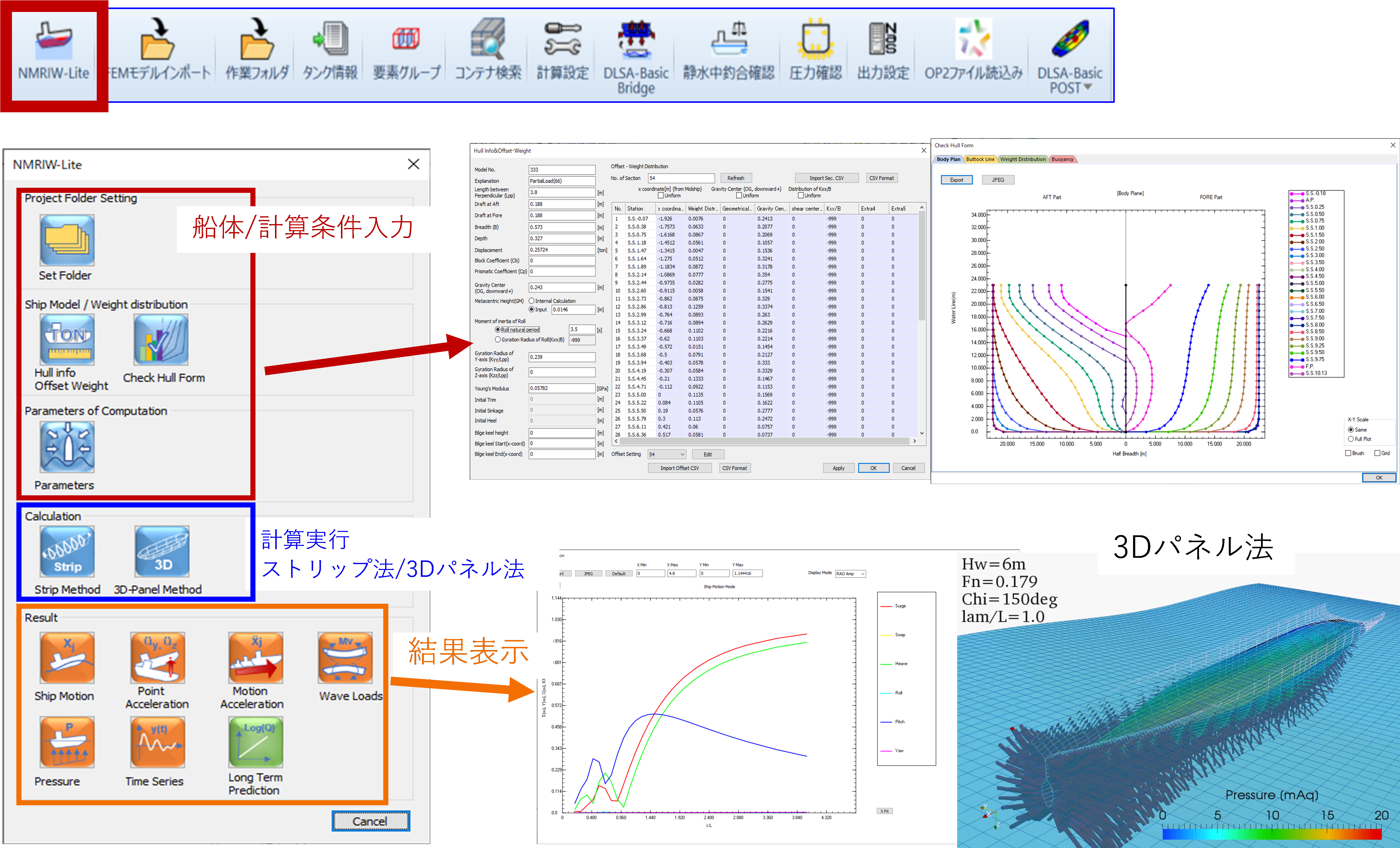
GUI Screen for Load Analysis
②Structural Response Analysis
- Automatic adjustment of cargo loads: Automatic extraction of elements affecting cargo loads (liquid, granular, containerized, etc.) and automatic determination of stacking heights.
- Other useful functions: Net/gross plate thickness change function, visualization of applied loads, load balance check function, and other necessary features for reliable structural analysis.
- Structural analysis: Structural analysis can be performed with general-purpose software such as MSC Nastran or Altair Optistruct.
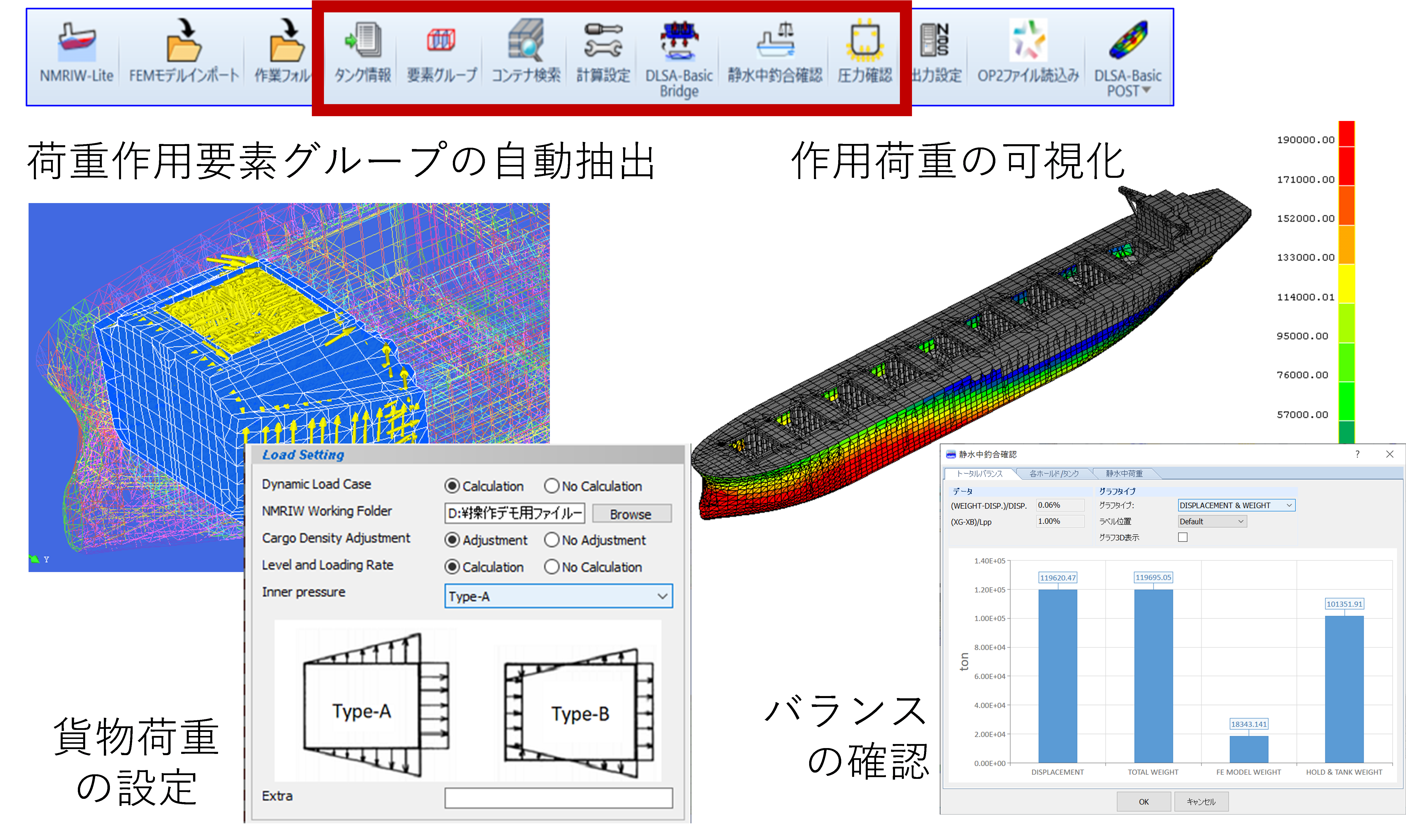
GUI Screen for Structural Analysis (and its settings)
③Strength Evaluation
- Statistical prediction of stresses and their visualization: Statistical prediction of stresses for all structural elements and calculation of long-term exceedance probability distributions. The maximum long-term stress values and the most severe short-term sea states for all structural components can be identified and visualized using contour plots.
- Buckling strength evaluation: Panels can be defined, and buckling strength evaluation and judgment can be performed.
- Hot spot stress evaluation: Hot spot stresses necessary for fatigue strength evaluation can be calculated and output.
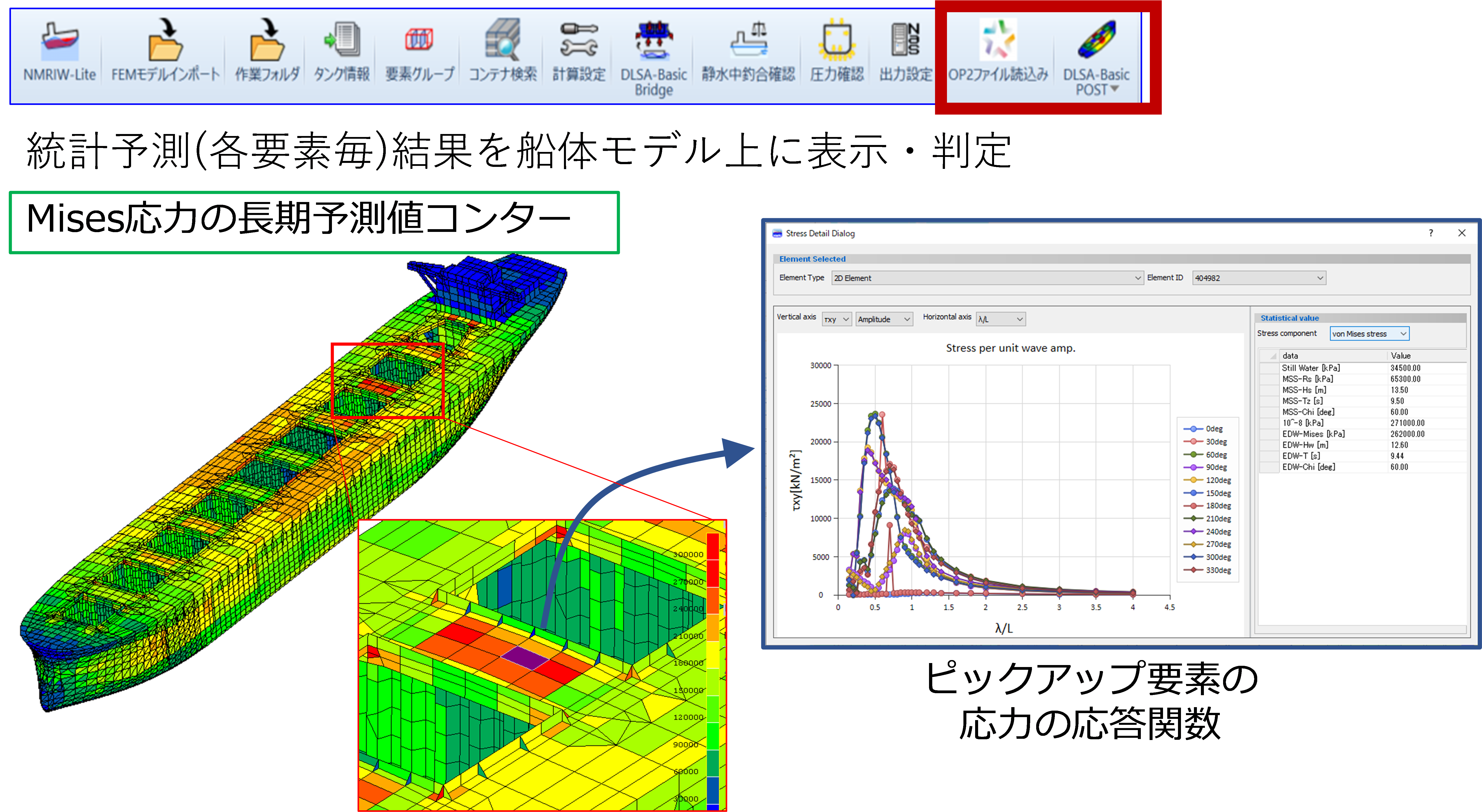
GUI Screen for Strength Evaluation (Statistical Prediction of Stress)
